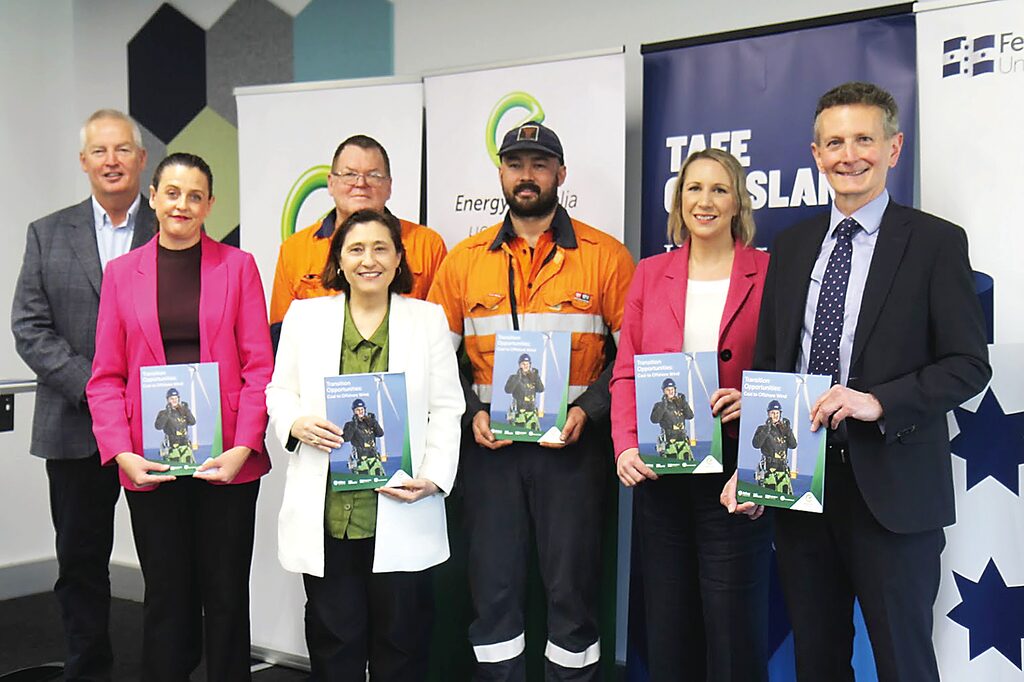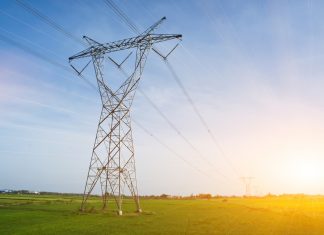By KATRINA BRANDON
A CAREER guide showing the potential new jobs that Yallourn W power station coal workers can find at offshore wind projects was unveiled at Federation University in Churchill.
Minister for Energy and Resources, Lily D’Ambrosio, launched the ‘Transition Opportunities: Coal to Offshore Wind’ guide booklet, which has been produced with the backing of EnergyAustralia, Federation University, TAFE Gippsland, Atlas Professionals, and Southerly Ten.
Southerly Ten is a specialist offshore wind developer by the team behind Star of the South and leading global fund manager, Copenhagen Infrastructure Partners (CIP).
CIP has established Southerly Ten to invest in offshore wind in Australia and New Zealand.
The careers guide for current Yallourn power station positions outlines the pathway for workers to transition from their current skills into offshore wind opportunities.
The guide explains that with some extra training, there are opportunities for coal power station workers to take up a new career in wind generation, mainly offshore, but also onshore.
The state government’s policy is to achieve 95 per cent of energy supply from renewable sources by 2035.
Minister D’Ambrosio said the transition away from coal generation to renewable energy would be really important for the workforce “to work out what it means for them”.
“We know the future is a bright future for people that are currently in our energy system to be able to look up this fantastic guide, to identify the jobs that they are filling right now, also to understand what is the next nearest job available to them if they wish to transition – the training opportunities and how long it will take them to re-skill to be able to move into those new jobs that are going to be created here off the shore of Gippsland,” she said.
Currently, about 60 per cent of the Yallourn power station workers have put their hands up for retraining, whether it be in the same or different fields.
According to Minister D’Ambrosio, the renewable energy projects are well underway. About 38 per cent of the target has already been reached, with 40 per cent being the target for next year. The project started with an ambition of having 50 per cent of the energy supply coming from renewables by 2030, but now, Minister D’Ambrosio said the team had decided to up the target to the legislated 65 per cent.
“The reason for the targets is to ensure that we actually have a transition that is smooth and that brings early investment into that replacement of electricity, and when we do that, we have the opportunity to create the jobs, we have the opportunity to do the planning for transition, which means people can think about what is their next job and what are the skills that they will need,” she said.
“We continue to ensure that we have a transition that is smooth, there are jobs there in local communities and that we keep a very clear eye on the reliability of our energy system and, of course, the affordability of it.”
Southerly Ten Chief Development Officer, Erin Coldham, said the guide should help relieve some of anxiety about jobs and the transition.
She said that during some mapping between coal and renewable positions, there was a 70 per cent skills overlap of good or higher skills between those existing traditional energy sectors and the offshore wind sector.
Federation University Vice Chancellor, Duncan Bentley, said that between the workforce and education, the renewable energy project offers multiple benefits and opportunities that could add billions of dollars of economic value to Gippsland.
“The reality is when Southerly Ten and others finish their investment, we will have seven to 10 billion dollars worth of economic add in the Gippsland region. That is more than just the renewable jobs; it’s the ancillary jobs and the communities with aspirations for a future they couldn’t imagine,” he said.
“That’s for our local area. When you look at it nationally… Gippsland will be providing tens of billions of dollars worth of contribution to the Australian economy, and that all starts with the people in this room who have a vision. It’s trying to bring that vision to life.”











